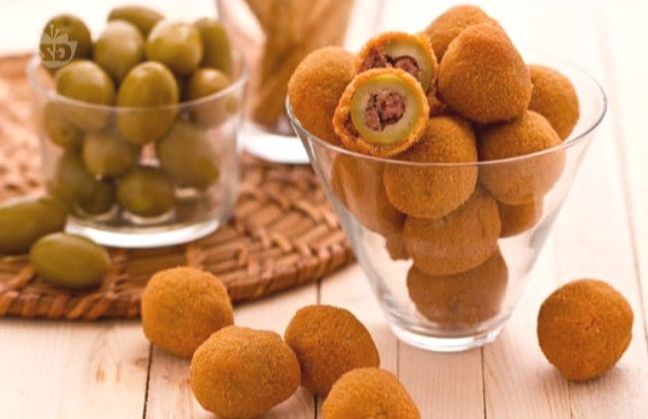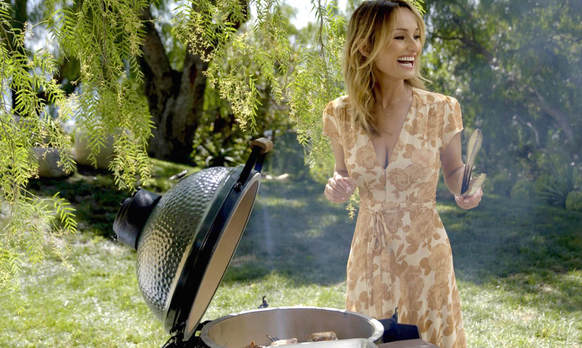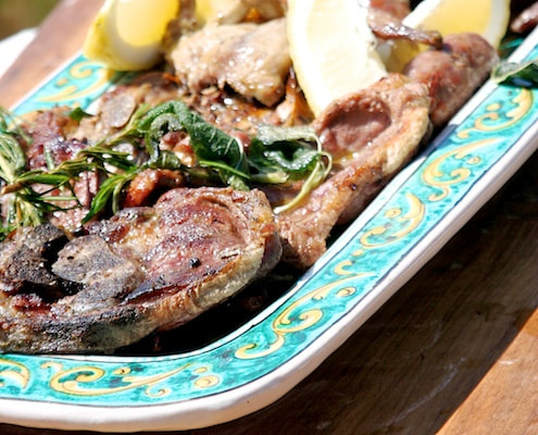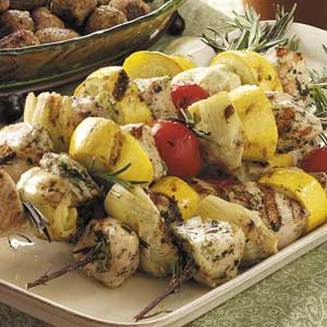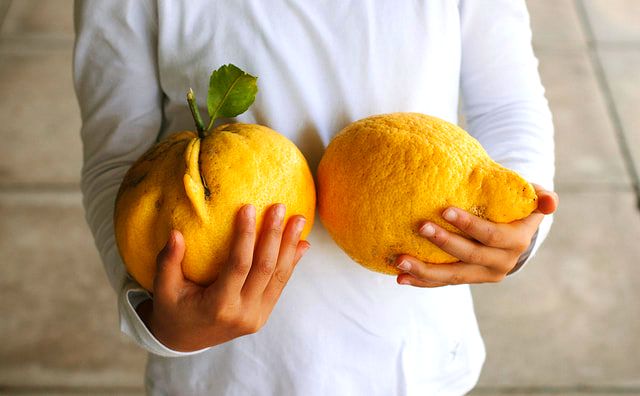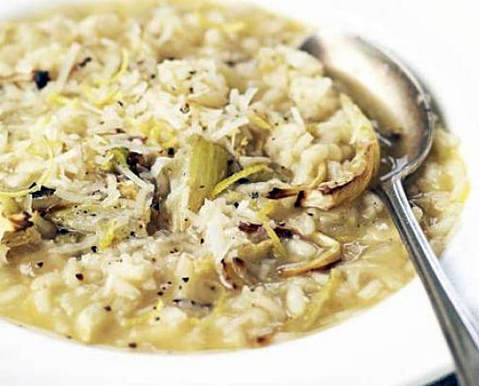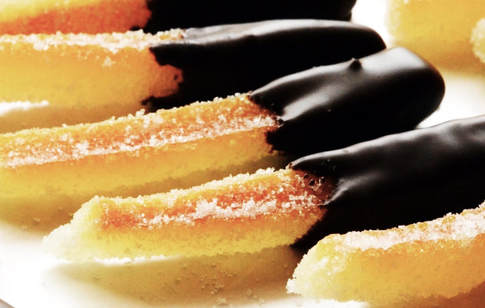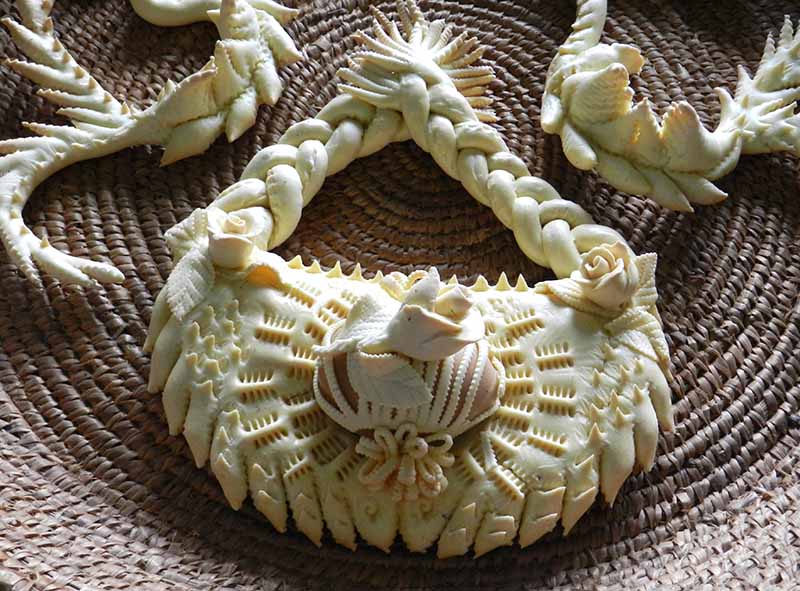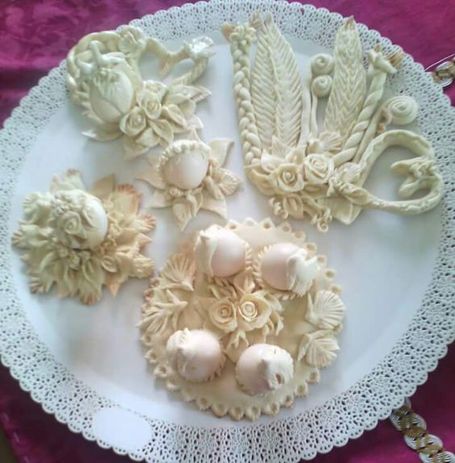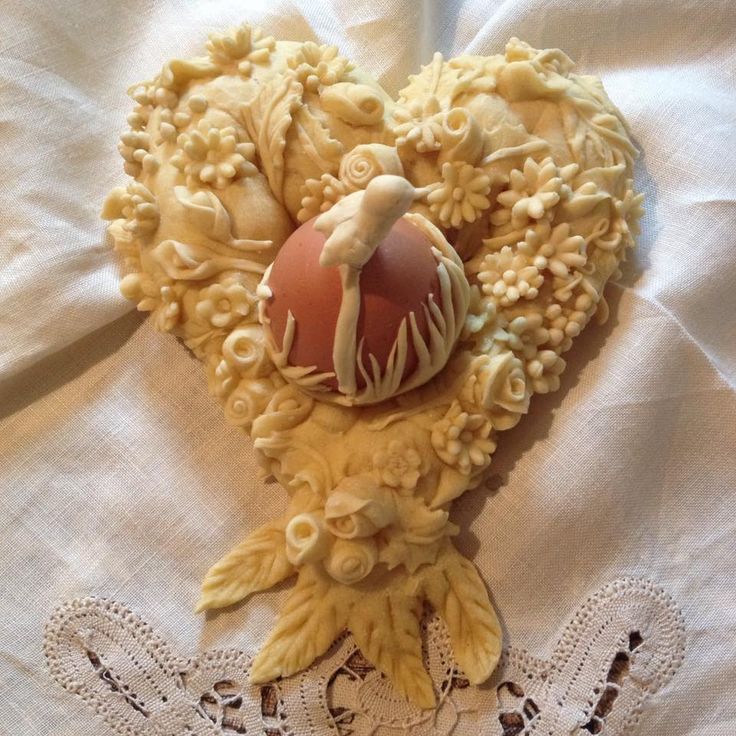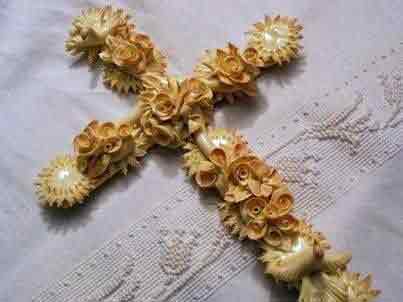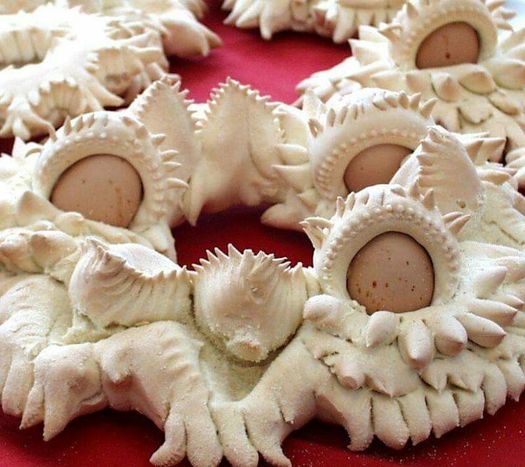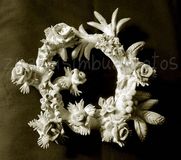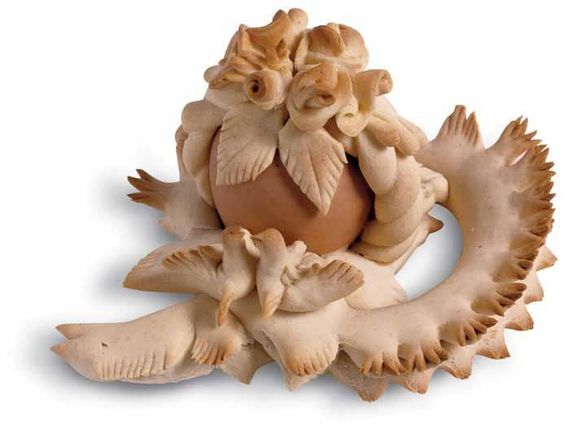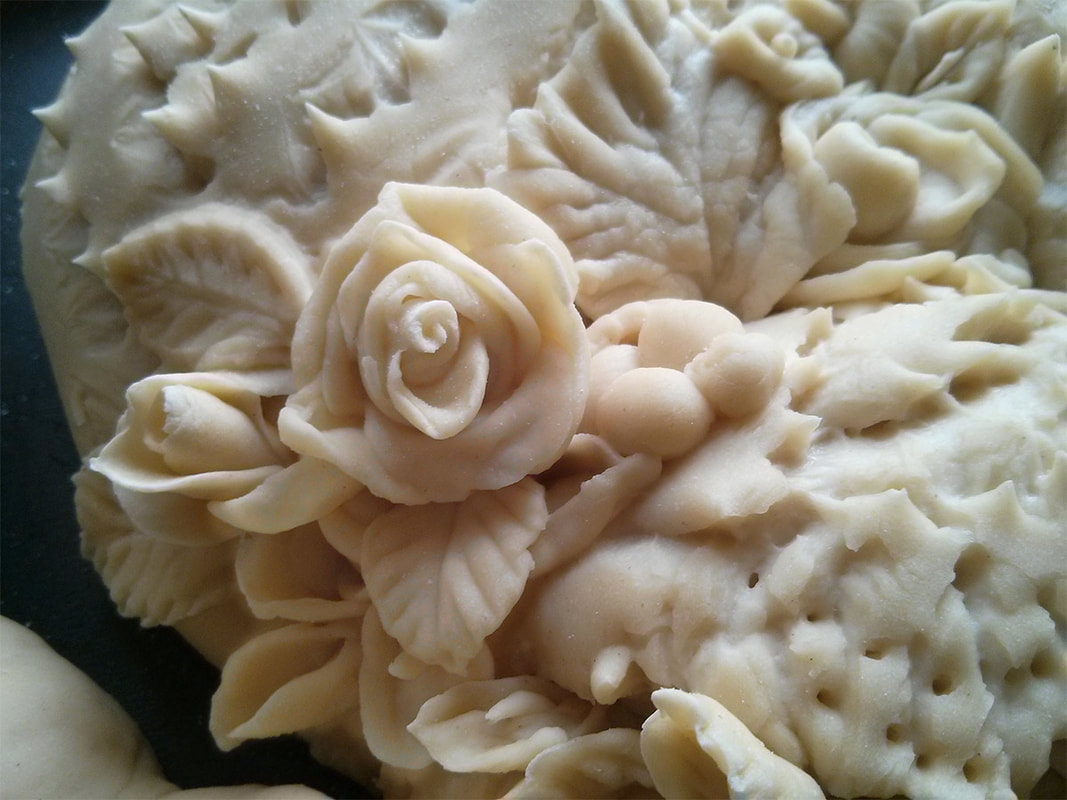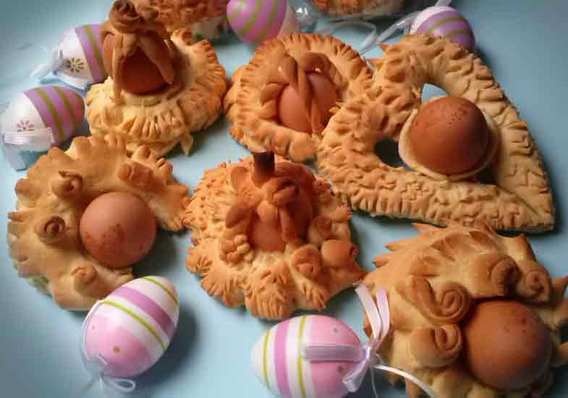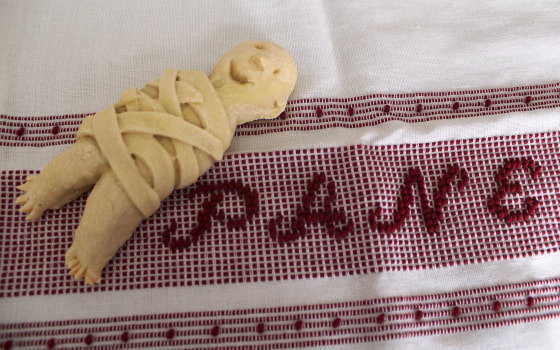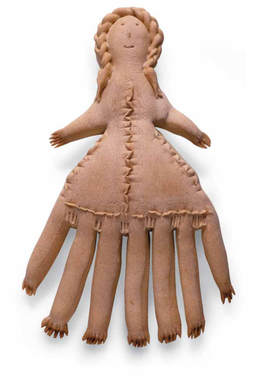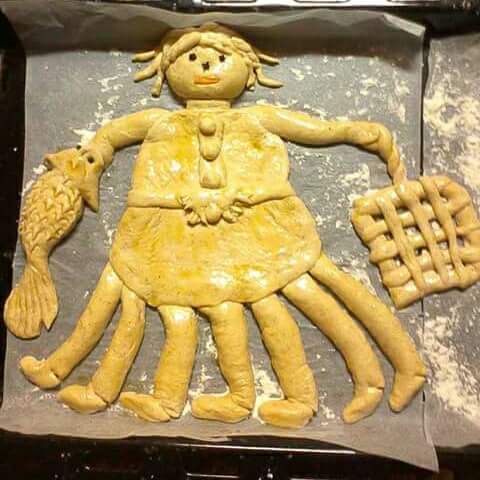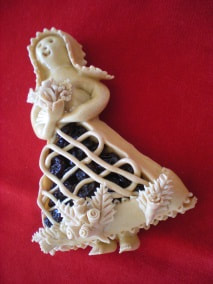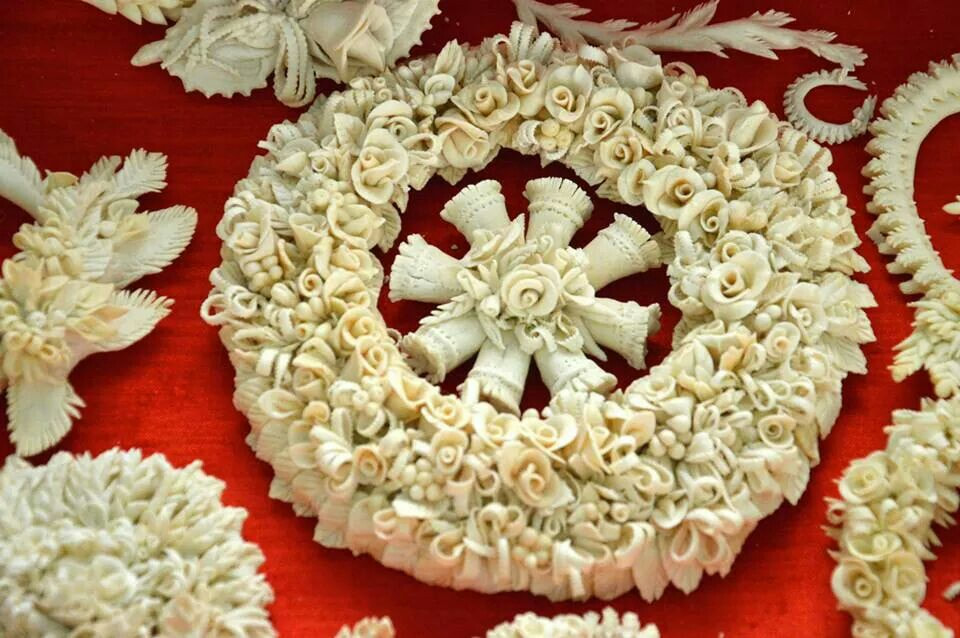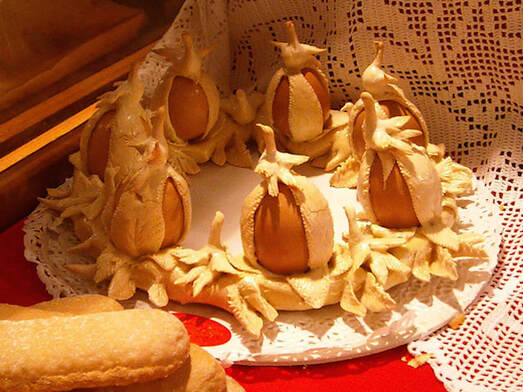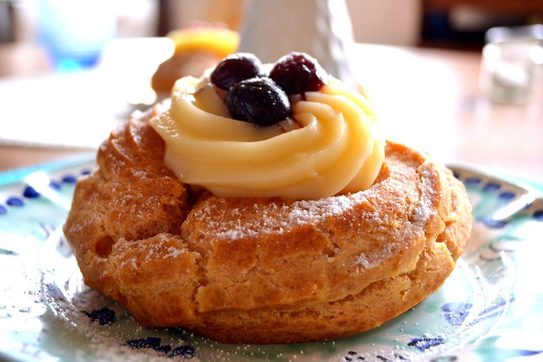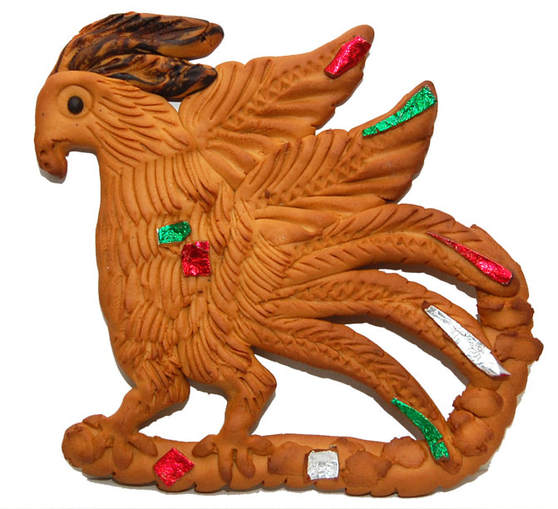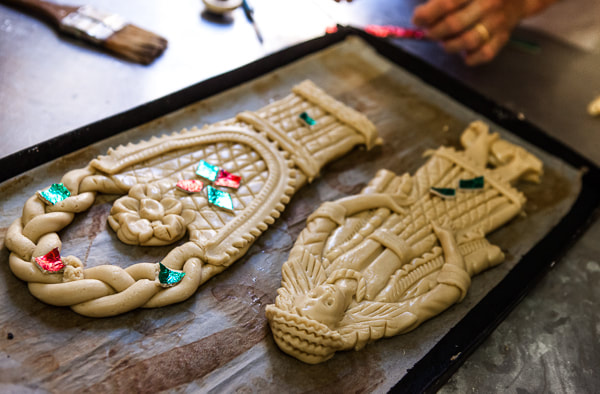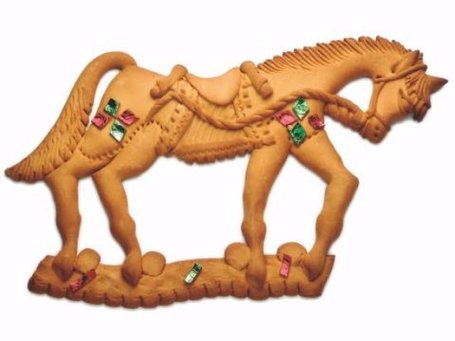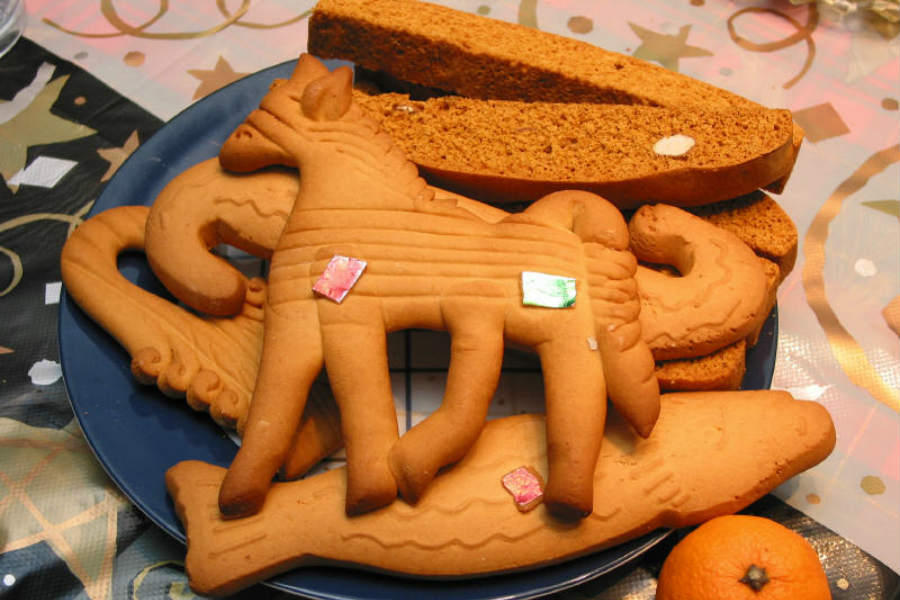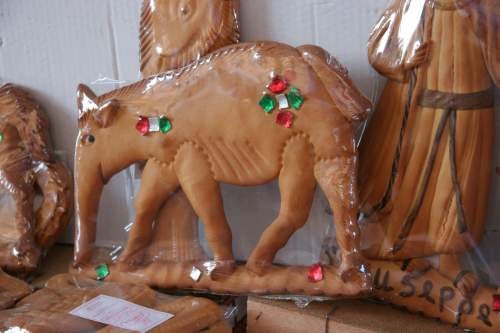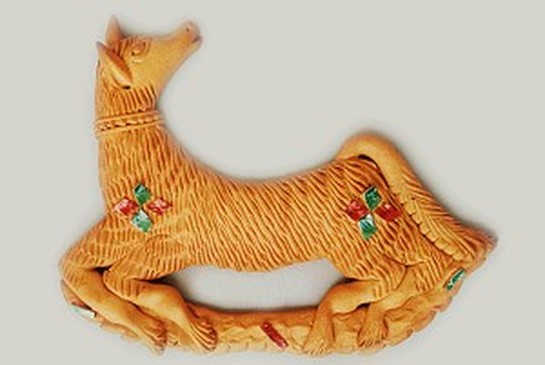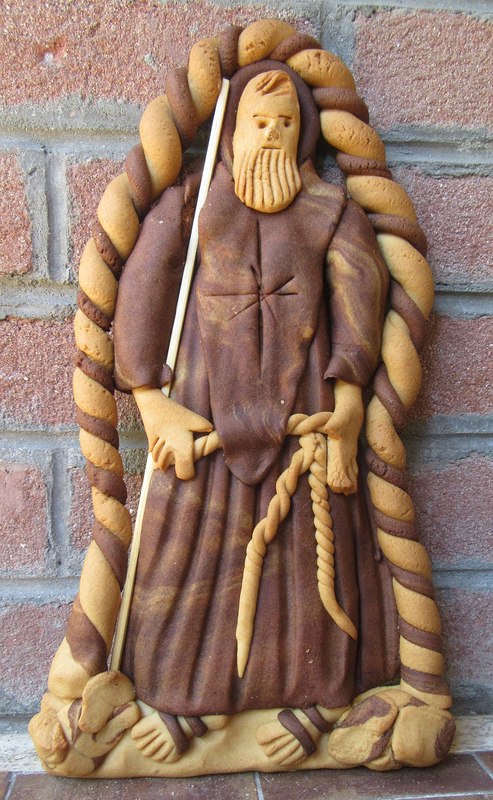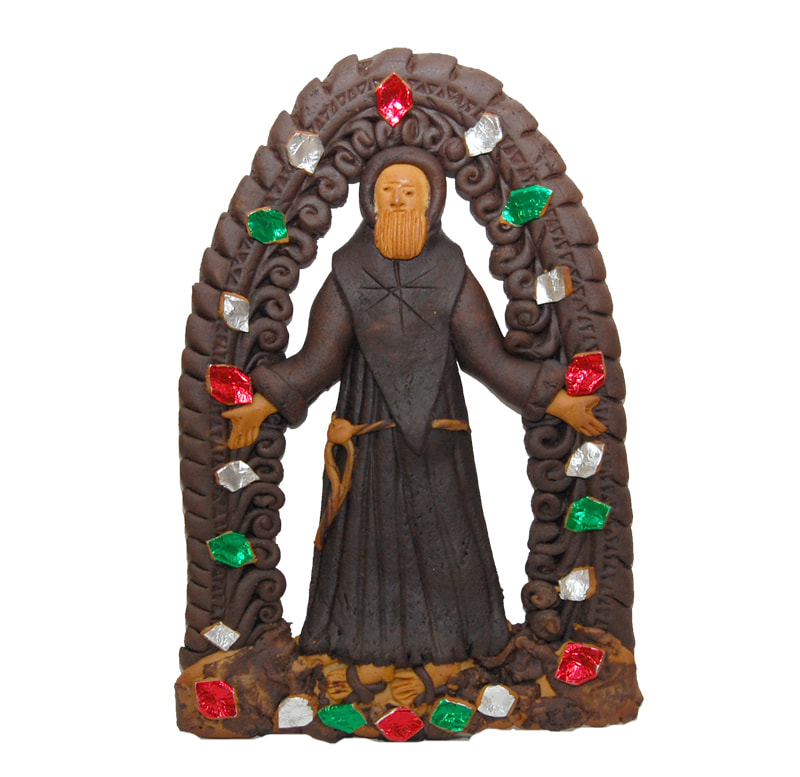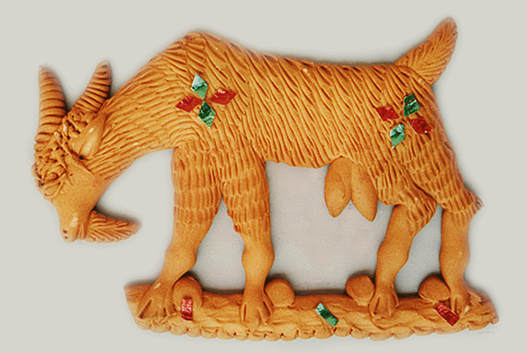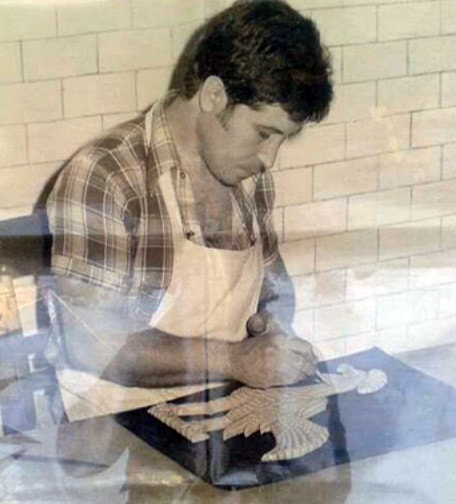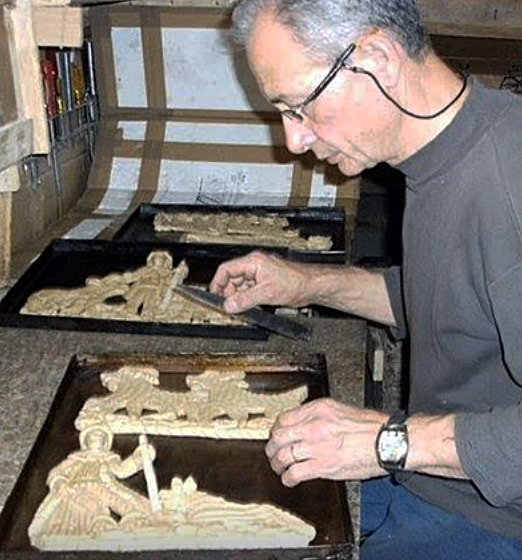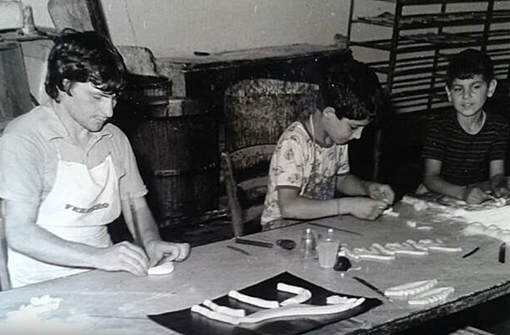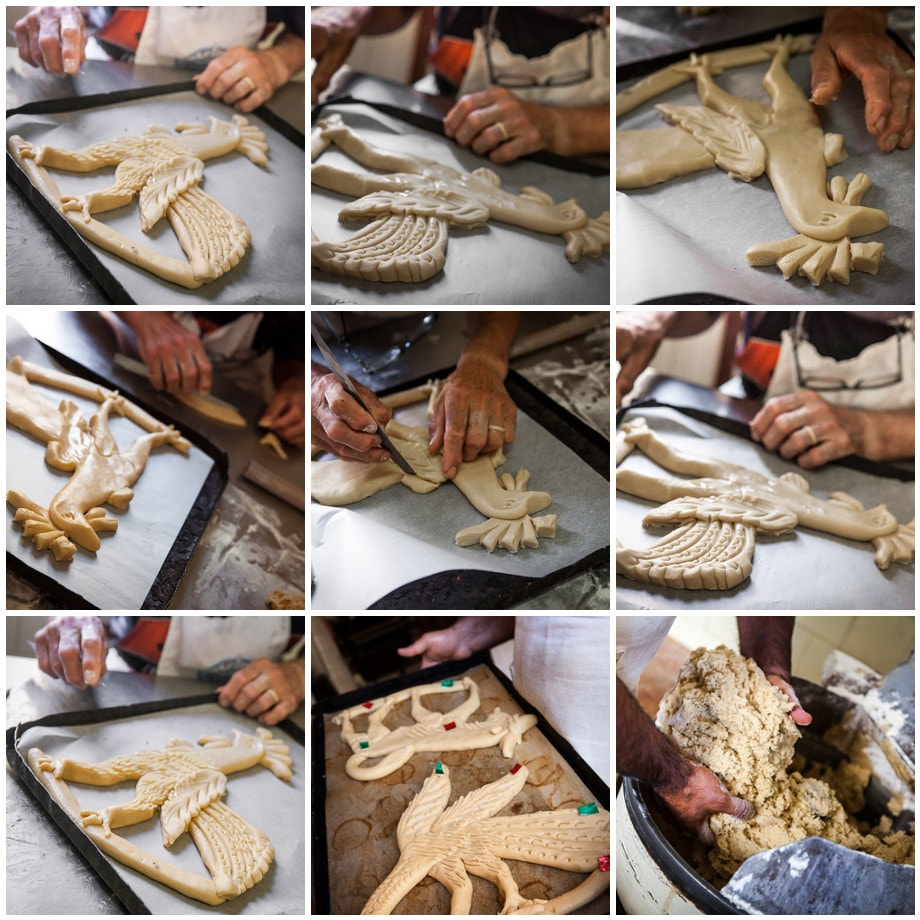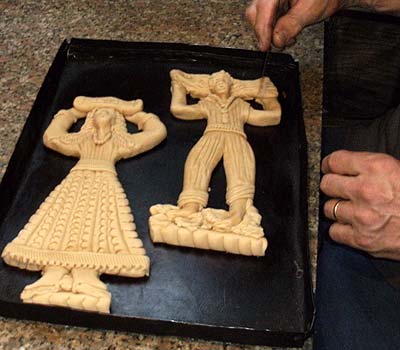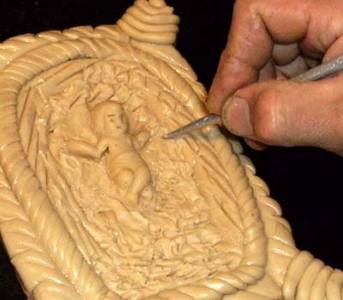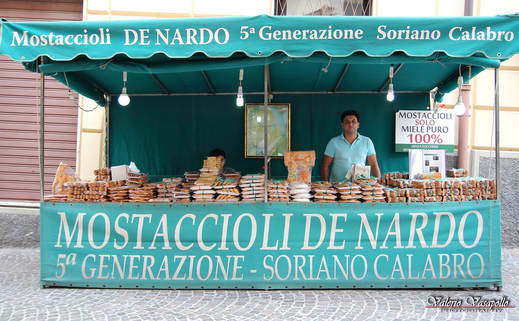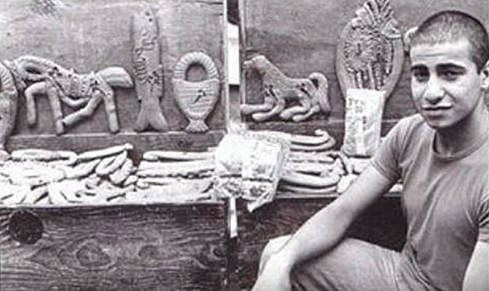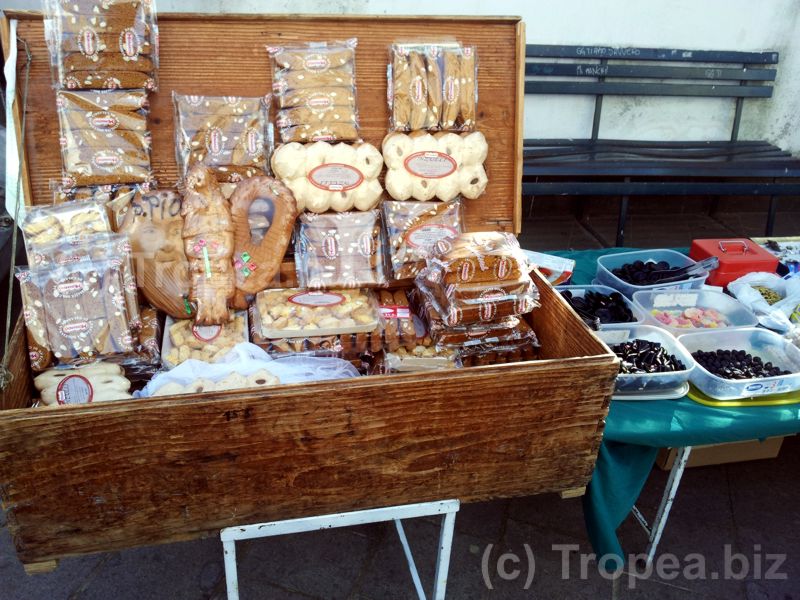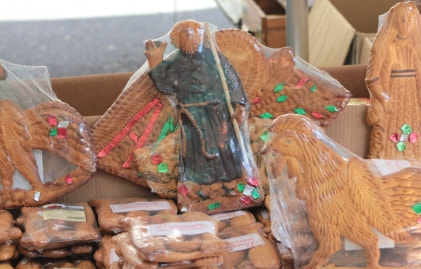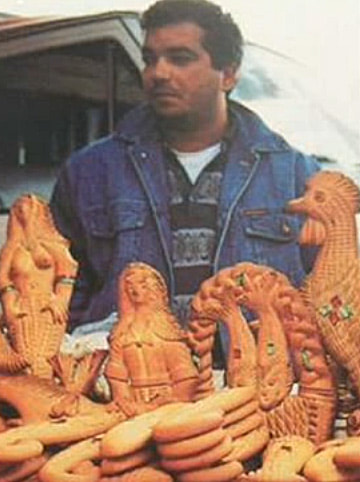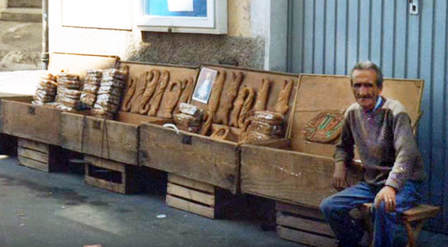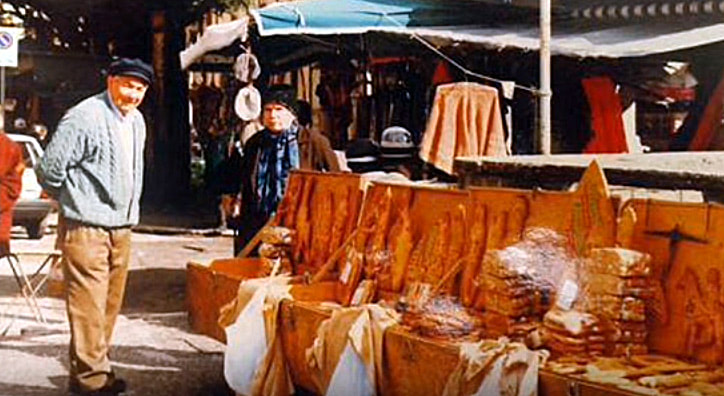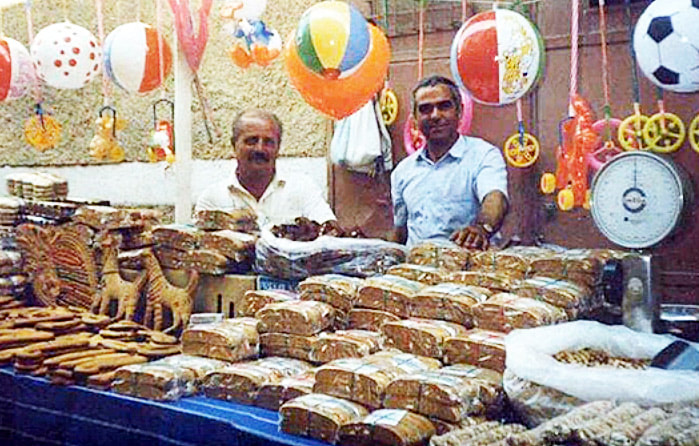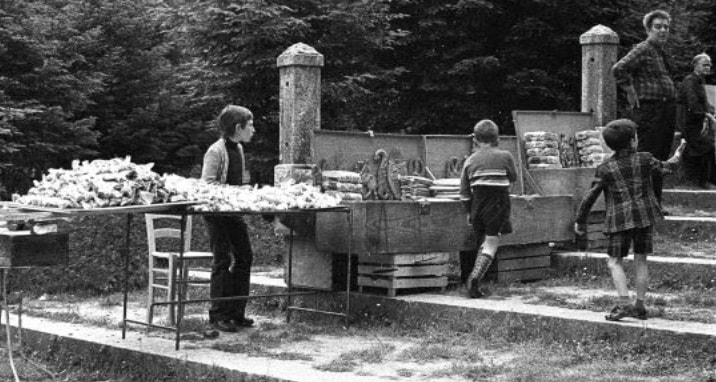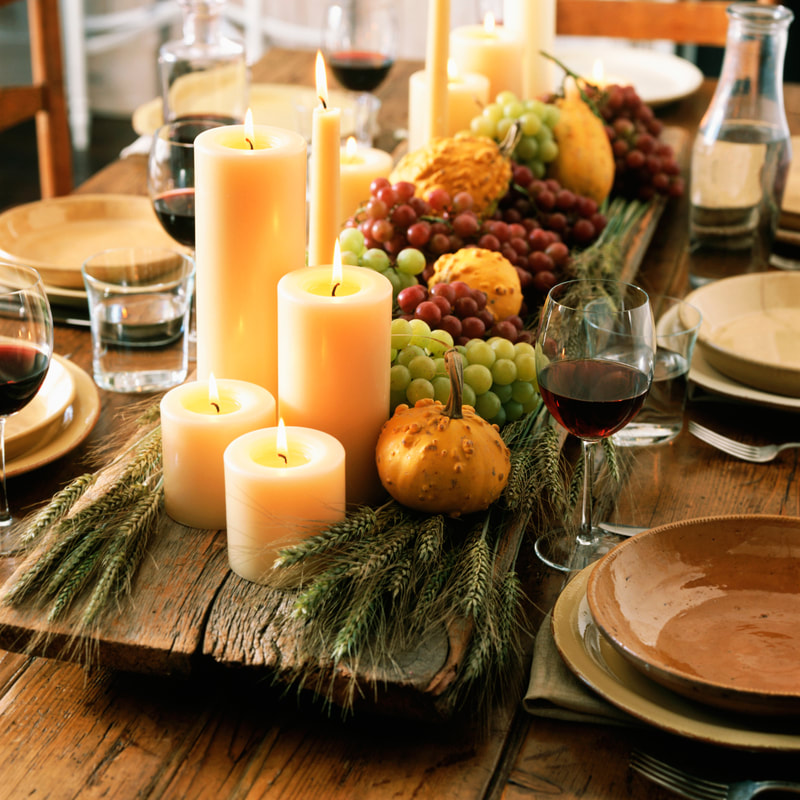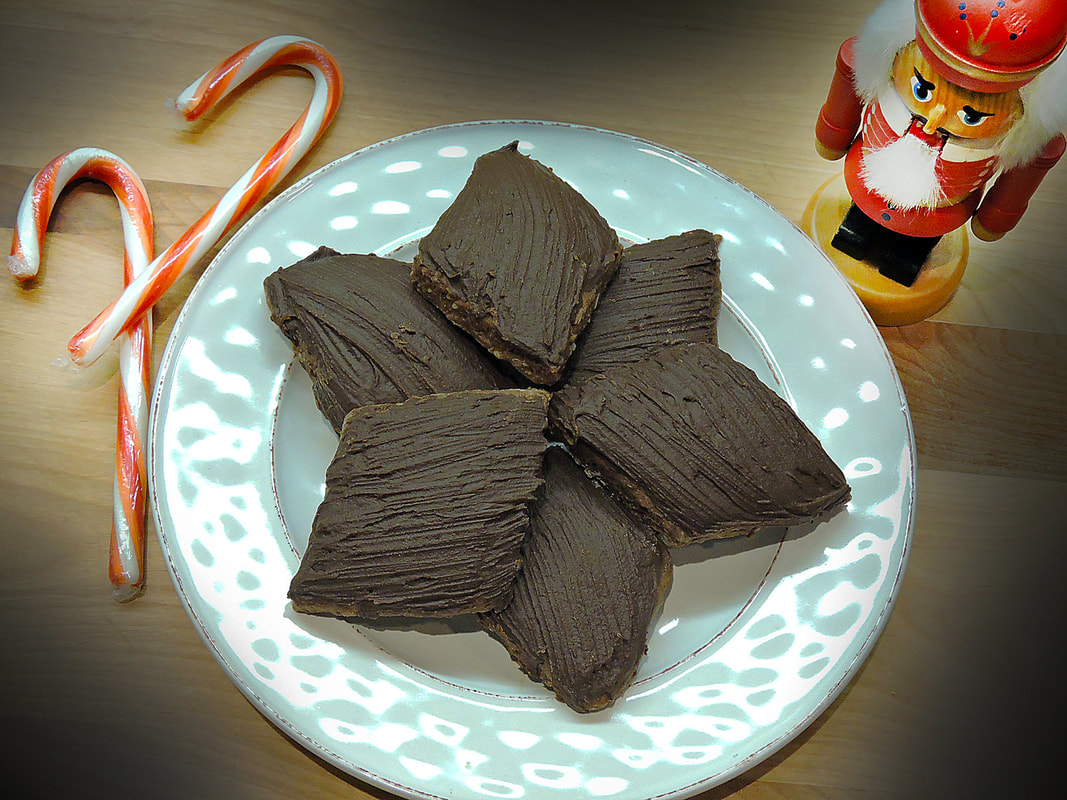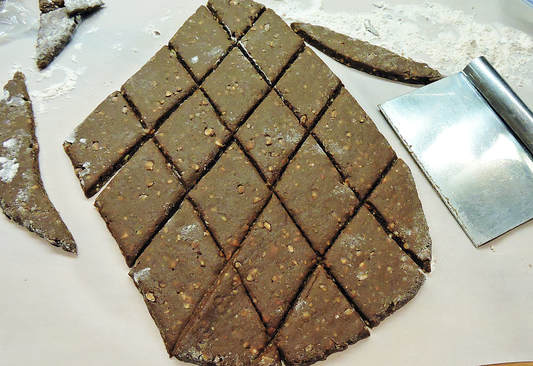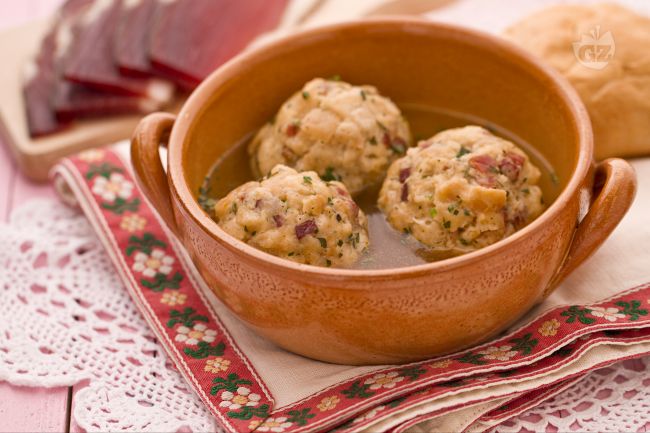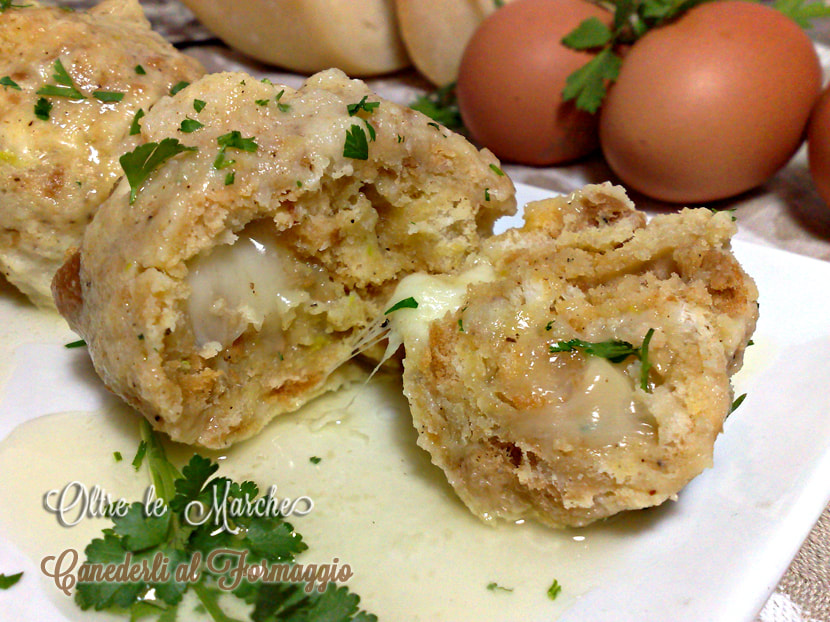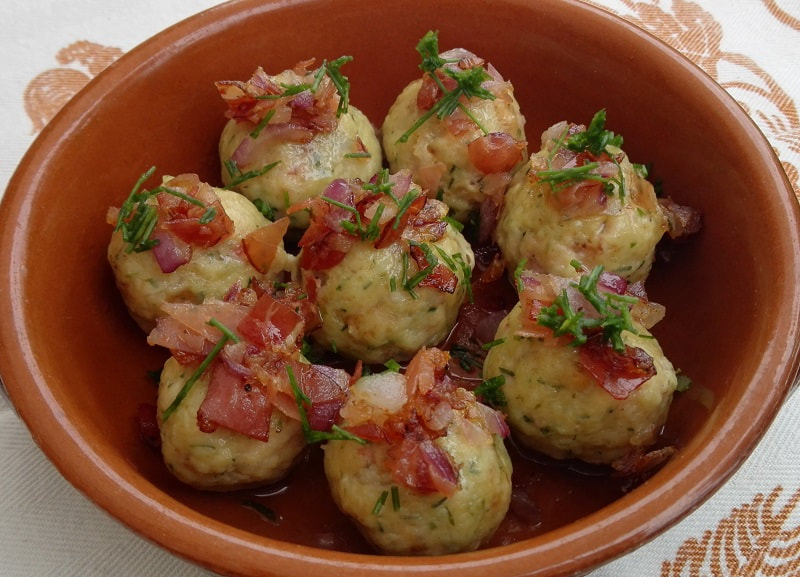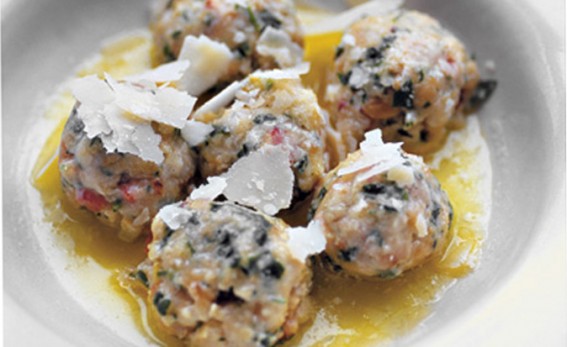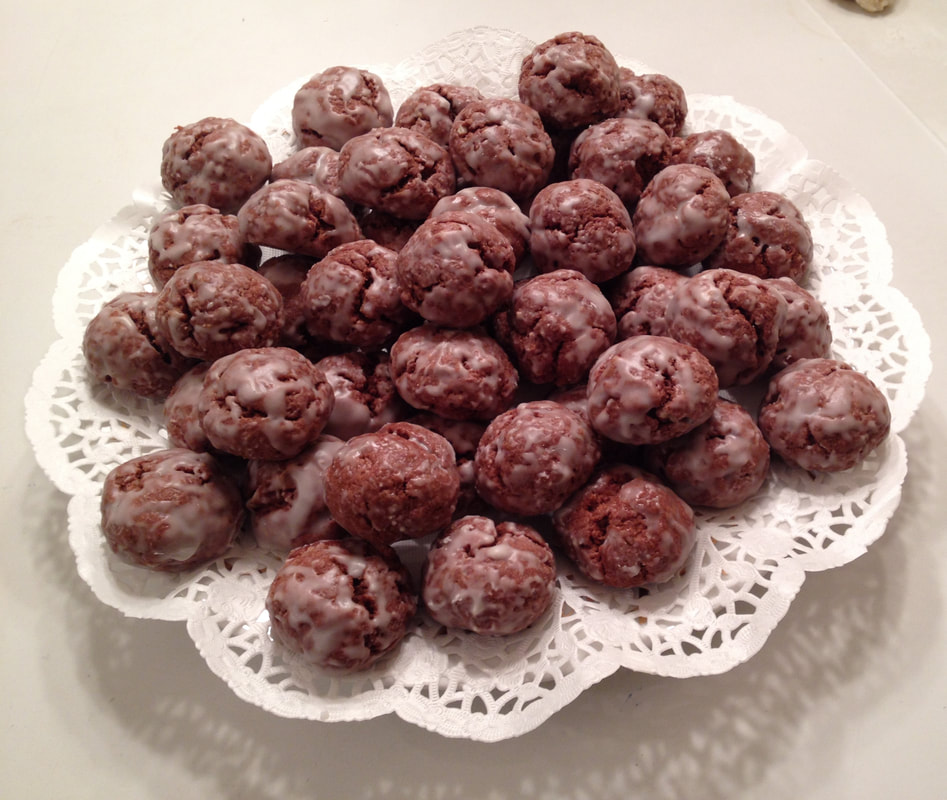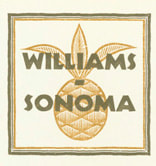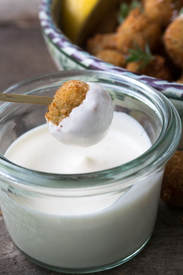
As an option to marinara as a dipping sauce, try some
Garlic-Lemon Aioli... Whisk together the following: 1/3 cup mayonnaise juice of 1/2 lemon 1 clove of garlic, finely minced salt and pepper to taste --GVI Memorial Day Weekend is here. And so is the corn on the cob, French fries, burgers, hotdogs, hot wings and brisket. In Italy the equivalent of our Memorial Day is April 25, la Festa della Liberazione which commemorates the end of WWII, followed by Festa dei Lavoratori (Labor Day) on May 1st. Many Italians combine the two and go on holiday to celebrate the beginning of spring, and like Americans, they love their BBQ, but typically over a wood fire. Many Italian-Americans are looking for ways to bring a little of Italy into their choices... here are some ideas. From Giada's Giadzy: Burrata and Kale Salsa Verde Bruschetta The salsa verde for these decadent toasts can be made a day ahead, making assembly a breeze once the grill heats up. Bistecca Fiorentina Florence's signature dish doesn't need to be made with that famous Tuscan beef - a good-quality rib-eye marinated in this herb-garlic mixture will do the job perfectly. Tomato, Avocado, and Escarole Salad Bitter escarole is a perfect foil for the rich steak in this simple side salad, while tomatoes and Castelvetrano olives add bright acidity. And you can never have too much avocado! Chocolate Ice Cream Sandwiches Ice cream on the grill? It's true! Grilled bread topped with luscious chocolate-hazelnut spread encloses scoops of vanilla ice cream for a perfect ending. A here are some tips on how to recreate an Italian Mixed Grill from Honest Cooking, using a variety of meats grilled over a wood fire, as Italians do.
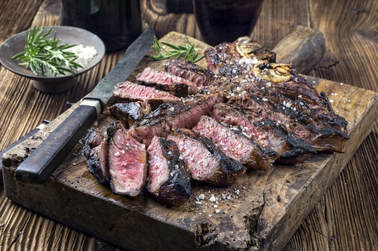 And of course, the ultimate Italian BBQ is the Tuscan classic, Bistecca alla Fiorentina, offered here from Memorie di Angelina. In Tuscany, the steaks used are from the Chianina, an Italian breed of cattle raised mainly for beef. It is the largest and one of the oldest cattle breeds in the world. In the U.S. 1-1/2 - 2"" thick porterhouse or T-bone steak are good substitutes. In Tuscany, these steaks are grilled over wood coals until dark and smoky outside and bloody toward the center. They are sliced thin and enjoyed by all with a salad of Italian greens (especially arugula) grilled potatoes or beans in olive oil and sage. There are always wedges of lemons, course sea salt, pats of butter or extra virgin olive oil to top it off. Chianti Classico or Brunello di Montalcino are good choices to add to the celebration. 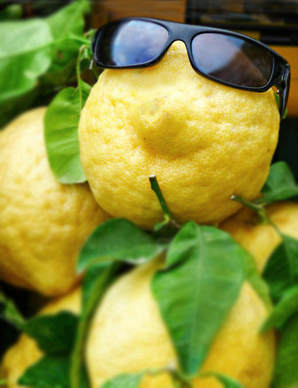 by Jerry Finzi While exploring the villages of the Amalfi Coast, Voyagers are certain to notice that the lemons there are larger than they are used to. They are sure to come across the Sfusato lemon (about two to three times the size of a supermarket lemon) and will be further shocked when they are confronted with the giant-sized, Cedro Citron variety of lemons. They are beastly looking things, with a pebbly surface, strange shapes with a large nipple at one end, and are often as big as your head! 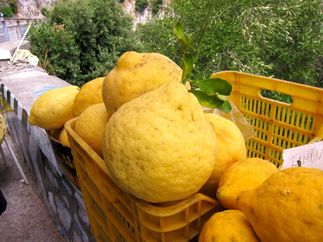 Cedri are primarily found in Italy, from the Italian Riviera down to the Amalfi Coast, though they are occasionally spotted in France, Isreal and even exported to Britain. There are three different citron types: acidic, non-acidic and pulpless. Of the different cultivars, the acidic Diamante is more common in Italy. Cedro citrons are usually up to three to four times the length of common lemons and can measure between 10 and 15 inches in diameter. They can weight up to 3-4 pounds each. The pebbly surface ripens from green to a bright yellow--both colors can be harvested, the peak season being fall and winter. Most--about 70%--of the lemon is white pith from 2-5 inches thick with a soft texture and almost sweet lemony fragrance. In its center is a small amount of segmented pulp with a few pale seeds. This lemon is fairly dry and not used for its juice and the taste is milder than a common lemon. 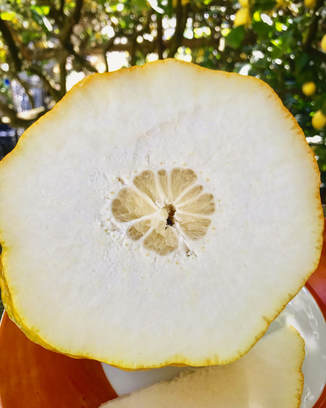 The pith can be eaten raw or cooked: in salads, atop bruschetta, in jams and preserves, in risotto or pickled. The rind of this citron is very aromatic and a bit sweet, and is used to produce "citron", or candied lemon (used in Italian celebration breads and cakes, like panettone). Some claim it can be a remedy for hangovers, coughs and indigestion. Since the Renaissance, the oils from the skin have also been used in perfumery and cosmetics due to their delicate and fragrant scent. If cooking while in Italy (or if you can get some cedri at home), try these recipes: Risotto alla Sorrento with Fennel and Sage 1 Cedro lemon 1-1/2 cups rice for risotto (Carnaroli, Vialone Nano or Arborio) 1-1/4 cups freshly grated parmesan 1 tablespoon unsalted butter, plus another tablespoon to finish 4 tablespoons Extra virgin olive oil 1 head of finoccio (bulbing fennel) - finely diced 3 stalks celery - finely diced 1 cup white white Vermouth 1 quart chicken stock 4 large julienned sage leaves (or 1/2 teaspoon dried-crushed) Sea salt and freshly ground black pepper to taste Directions
Candied Chocolate Cedro Strips Recipe (A great holiday snack) 1 - 2 pound cedro 1 cup sugar 1 pint water 3-5 ounces bitter sweet chocolate
You can store these in an airtight container and serve at the end of a meal with fruit, nuts, biscotti and espresso. © GVI 2018 You might also be interest in:
When Life Gives Them Lemons, Italians Make Limoncello Amalfi Lemon and Chicken Pasta Lemon and Turkey Pasta with Prosecco
Chie hat pane mai non morit.--Sardinia Proverb
One who has bread never dies.
In Sardinian bakeries there is a time honored tradition of elaborate and intricate decoration of celebration breads for weddings and also for Pasqua (Easter), called
Pane Pasquelina, or in local dialect known as Su Coccoi or Pane Coccoi. The designs recall ancient symbols from the many cultural influences in Sardinia. The shapes include the crown, wreathes, the chick, a girl, doves, fish, small baskets, fruits and flowers. Especially for Easter, whole eggs are incorporated into each design, sometimes hidden but often exposed within the design theme. These breads are considered symbols of fertility and good luck. When you look at the intricacies of these artisinal breads, it's surprising to think the only tools used are a small knife and scissors.
Two interesting shapes are called Sa Pippia and Lazzaro. Sa Pippia is a doll-shaped bread with seven legs, one for each day of the Holy Week. This bread was used as an Easter Advent Calendar, one leg given to a child each day leading up to Easter Sunday. Lazzaro represents the body of Lazarus wrapped in a shroud, a symbol of resurrection.
Watch as the Nonni teach the younger women how to create Pane Coccoi
and then bake them in a community oven.
If you'd like to try making these special breads, here is an authentic Sardinian recipe that I translated and converted...
Recipe
Shaping the Dough
Baking Preheat your oven to 450 F degrees with the pizza stone on the middle rack. Place a sheet pan on the bottom or lowest rack of your oven at this point. I suggest using a pizza peel to transfer your breads into the oven and directly onto the pizza stone. If you don't have one, you can use an up-turned sheet pan lined with parchment paper (the paper will slide onto the stone with the dough). Alternately, sprinkle the back of the sheet pan with course cornmeal, then place your shaped breads on top. The cornmeal acts like ball bearings to slide your breads onto the stone. I don't recommend baking your breads on pans simply because the pans would be cold when placed into the oven. If you do want to use pans instead of a pizza stone, use sturdy, heavy dark pans. They will heat up faster. Just before placing your breads into your oven, pour about 1/4 cup of water into the hot sheet pan on the lower rack to create steam. Immediately shut the oven door. Quickly transferring your formed breads into the oven, bake for the first 10 minutes at 450 degrees, then lower the temperature to 350 F degrees and continue cooking for another 20-25 minutes. You might want to quickly spray some water onto the oven's side walls halfway through the baking. Check the browning of the bread and adjust according to your oven. These breads should be a very light tan with a fine textured crumb interior. Remove from the oven and place on cooling racks to dry and cool completely. There is another version that adds eggs, so you can experiment in adding eggs while you compensate by adding more flour. You can still eyeball the smoothness and elasticity of the dough when mixing. Remember, making dough for breads and pizza is a feel thing, varying depending on the humidity of the day. Have a great celebration! Buona Pasqua! --Jerry Finzi
You might also be interested in...
Our Pane di Pasqua Recipe Vintage Italian Easter Cards Decorated Italian Easter Eggs How Italians Celebrate Easter Celebrating Easter in Italy
SHARE ON YOUR SOCIAL MEDIA SITE
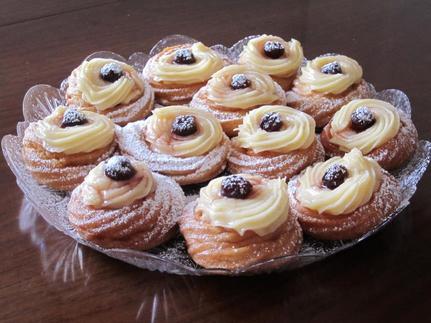 Ingredients For the Custard
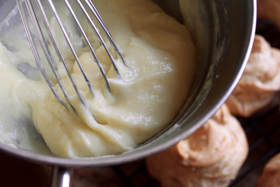 Directions Custard Cream
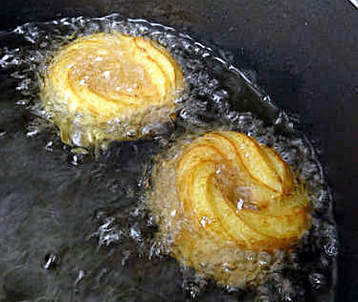 Zeppole
Buon appetito! --Jerry Finzi 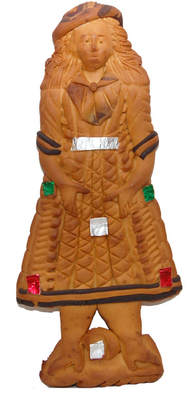 The ancient town of of Soriano Calabro sits between the hills of Calabria and is known for the hard, spiced and shaped biscuits known as Mostaccioli (also, Mastazzola, Mustazzoli). They are traditionally made using grape must, a byproduct from wine-making process. These ornately decorated and shaped treats are popular for festivals, weddings, Christmas and Easter. The more traditional shapes include a parma (the palm), u panaru (the basket), a grasta (the heart), u pisci spada (the swordfish), and a sirena (the siren). Aside from the myriad of shapes, they are decorated with colored foil and some might even have been created using different colors of dough. These are not molded but cut and assembled by hand. 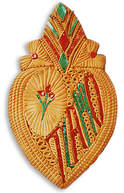 You can still see Mastazzolari (vendors) selling plastic wrapped Mostaccioli from their wooden trunks at sagre in the region, with parents buying ones shaped like a horse or bird for their children, or the devoted purchasing one shaped like a saint, angel, fish or basket as an offering on a saint's day. A heart shaped one might be given on a wedding, engagement or on San Valentino's day. 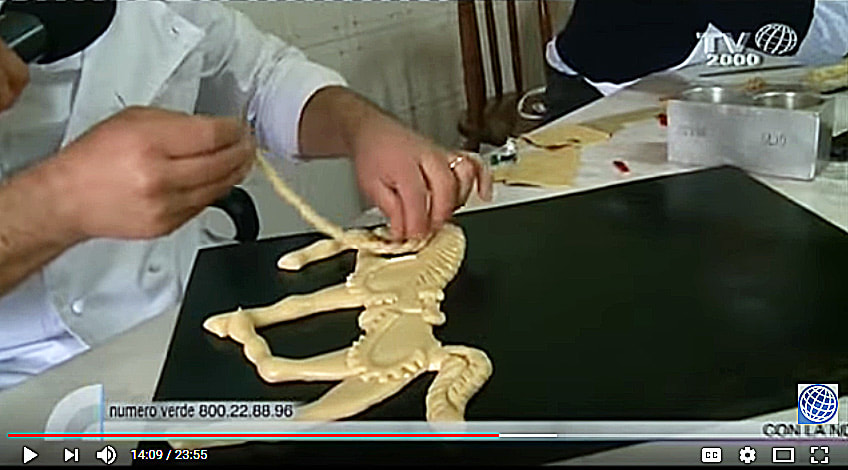 Or, if you prefer, you can watch the video right here... Click below. Creating Mostaccioli Mastazzolari and How They Sell Their Wares
In Italy, one important tradition is completing the dinner with dried fruit and grapes. But the uva (grapes) represent something... according to tradition, having grapes on the table during New Year’s ensures that those sitting at the table will be wise and frugal spenders of money. This is based on the idea that one must exercise significant willpower in order to conserve grapes taken from the fall grape harvest without eating them until Capodanno (New Year's Day). This simple sacrifice means that through willpower, you will be wise and frugal during the coming year.
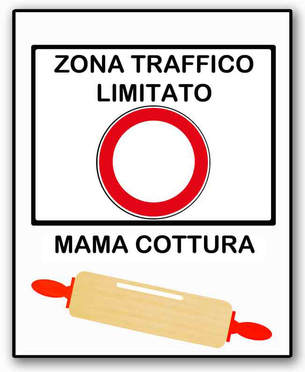
Every holiday season, my wife Lisa bakes. And bakes. And bakes. We've even made a special sign for our kitchen for these turbulent times... Translated, the sign says "Limited Traffic Zone, Mama Cooking". It's often tense when she's trying new recipes and techniques, so Lucas and I have learned to stay out of harms way. I mean, after all, there are many big chef's knives and large mattarelli (rolling pins) in our kitchen!
This year, we put the sign up again, knowing things might get a bit tense--Lisa was trying several new traditional Italian recipes. This time, she was making an authentic spiced cookie recipe: Mostaccioli. This cookie can be thought of as an Italian gingerbread. There are two basic types: one for forming and sculpting cookies shaped like animals, angels and the like; and the other, a diamond (or rhombus) shaped, chocolate coated cookie. 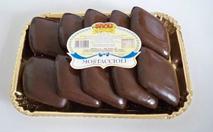
Oddly, in Italy, not many people make this cookie any longer, but buy them at Christmas in cellophane wrapped trays--factory made. Lisa wanted to make a traditional, authentic recipe... just like her Sicilian grandmother would have made back in Corleone, where it might have been called mustazzoli in local dialect.
Traditionally, Sicilians use either vino cotto or honey to make these cookies. Many others will use a mixture of honey and grape juice. Grape molasses is available in Middle Eastern grocery or specialty food stores, but Lisa simply used a good quality honey.
Ingredients
Directions
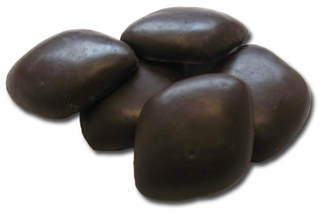
In this recipe, Lisa wanted a rustic bark texture, so she brushed on her melted chocolate. But if you want a more traditional, super-shiny coating, you'll need to learn how to properly temper your chocolate. Here's a great article by King Arthur Flour on tempering chocolate for a shiny coating.
With mostaccioli, you can either place the cookies on a cooling rack and pour the tempered chocolate over them using a large spoon, or using a small spatula or tongs you can dip your cookies into a bowl or measuring cup into your tempered chocolate. I highly recommend leaving a couple of your Mostaccioli out for Babbo Natale along with a mug of cioccolata calda on Christmas Eve. Buon Natale! --Jerry Finzi Well... Almost. Canederli are bread dumplings found in the north-east of Italy (Trentino-Alto Adige, Friuli, and part of the Veneto), typically served in beef broth, dry or with a sauce. They are made using stale bread, milk, onions, parsley, eggs and a little flour. Often they are stuffed with speck (a smoked prosciutto), cheese, mushrooms or pancetta. You can also serve them as a side with sausages. Canederli with Speck
Ingredients 1/2 pound of stale bread 2 eggs, beaten 6 ounces diced Speck 1 medium onion, diced 6 cups milk fresh parsley 4 tablespoons butter, softened 1 tablespoon flour pinch nutmeg Pinch salt Instructions
Chocolate Spicy Meatball (Biscotti)
Ingredients 1/3 cups granulated sugar 1/2 cup cocoa 1/2 tsp. baking soda 3 tbsp. baking powder 5 cups flour 2 tsp. cinnamon 2 tsp. ground cloves 2 tsp. nutmeg 1 tsp. salt 1 cup chopped walnuts 3 cups (18 oz.) semi-sweet chocolate chips 3 eggs, slightly beaten 1/2 cup corn or canola oil 2/3 cup milk Directions
Icing Combine 2 cups confectioner's sugar, 1 tsp. vanilla extract and enough milk to make a thin (but not too thin) icing (approximately 2 tbsp.). Mix until smooth and drizzle over cooled cookies or dip tops of cookies into icing and let stand until dry. |
Archives
May 2024
Categories
All
|

